Introduction
In the rapidly evolving digital landscape, understanding the fundamental differences between websites and web applications is crucial for businesses and developers alike. Websites primarily serve as informational platforms, presenting static content to users, whereas web applications are dynamic, interactive systems designed to perform specific tasks. This distinction impacts their development, functionality, and user engagement significantly.
Websites prioritize user-friendly content delivery, while web applications focus on providing specialized functionalities and seamless user experiences across various industries, such as e-commerce, online education, and remote work. By leveraging advanced technologies and frameworks, developers can optimize web applications to be scalable, efficient, and highly responsive, ensuring they meet and exceed user expectations. This comprehensive exploration will delve into the core differences, development requirements, and strategic considerations essential for choosing between a website and a web application.
Key Differences Between Websites and Web Applications
Websites and web software play distinct roles in the digital ecosystem. Websites are mainly informational, created to display content to visitors, often made up of static pages. In contrast, online platforms are interactive environments that allow individuals to carry out specific tasks and operations. These programs are dynamic, requiring user input to generate responses. They operate on the server-client model, using the HTTP/HTTPS protocol to facilitate communication. This fundamental distinction affects their growth and utilization, with websites concentrating on user-friendly content delivery and web platforms providing customized functionalities for various industries. For example, remote work, online education, and e-commerce depend significantly on web programs to deliver smooth, effective services. By utilizing advanced technical stacks such as Django, Tailwind, and HTMX, developers can enhance web platforms to be technically smooth, scalable, and provide a consistent and effective experience for individuals. This approach ensures that web applications not only meet but exceed expectations through tailored interactivity and responsiveness.
Functionality and Purpose
Websites mainly function to provide information such as articles, images, and videos for individuals to browse. They are typically static, offering content without needing much interaction from individuals. In contrast, web platforms are designed for specific, interactive functionalities like online banking, e-commerce, and social media. These programs are dynamic and require participant involvement, making their development and experience more complex. By leveraging the HTTP/HTTPS protocol for communication between the server and the client, web platforms support a variety of modern activities such as remote work, online education, and electronic banking. This increased complexity is necessary to meet the varied needs of individuals and provide a seamless, interactive experience.
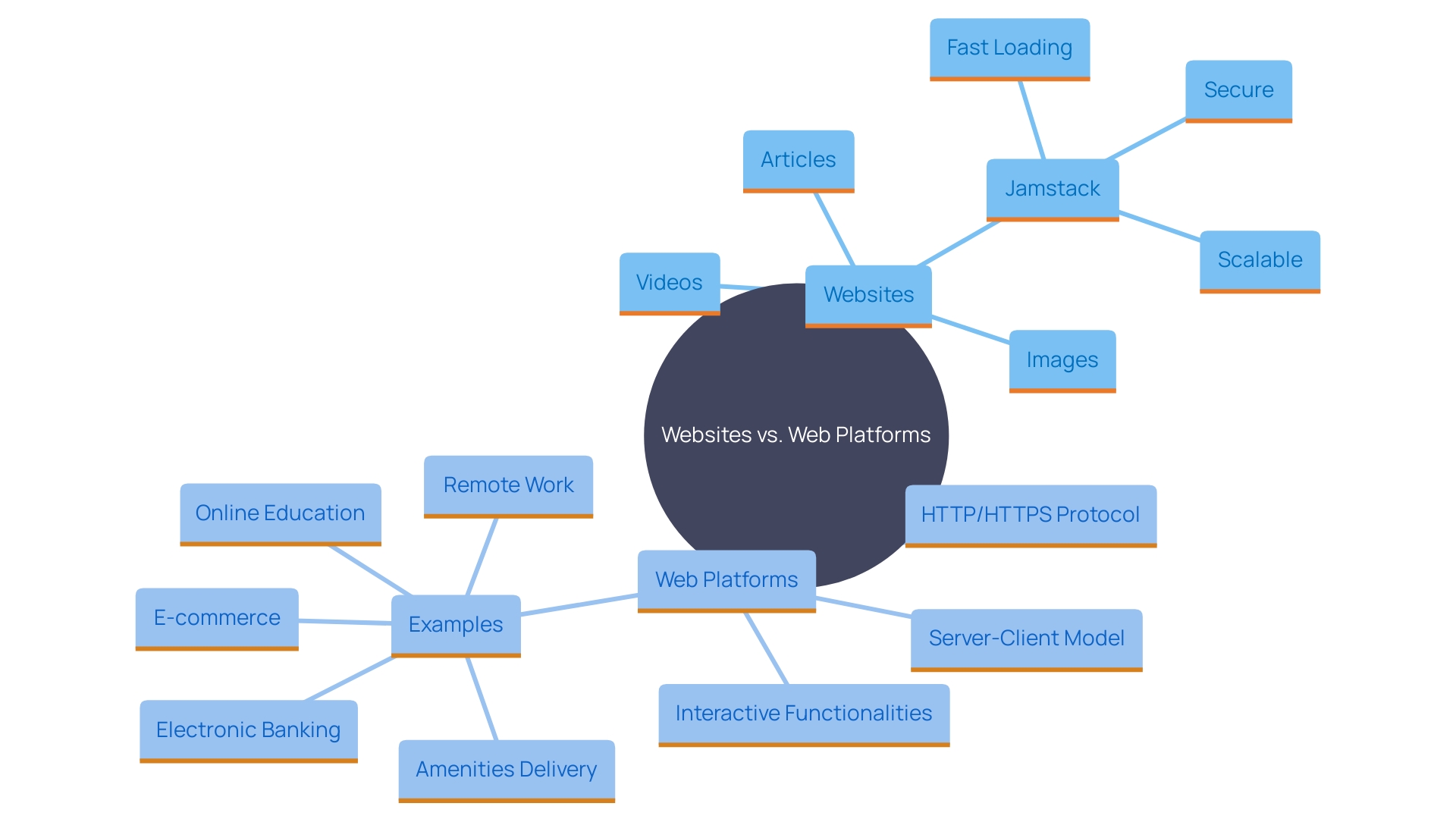
Interactivity and User Engagement
Interactivity is a hallmark of online platforms, empowering individuals to engage dynamically with the software in real-time. Elements such as forms, data processing, and interactive dashboards are essential to online platforms, greatly improving engagement. For instance, interactive features like buttons and adaptive content can maintain the interest of individuals, resulting in extended sessions and greater engagement. This is vital as interactivity allows web applications to customize content and experiences based on actions and preferences, making them more intuitive and accessible.
In contrast, websites typically provide limited interaction, focusing more on delivering static content rather than enabling input from visitors. This fundamental difference in engagement models directly affects client retention and satisfaction. Websites created with fewer interactive elements may find it challenging to maintain visitor interest, leading to increased bounce rates. For instance, research has shown that overall bounce rates have increased over time, particularly among desktop visitors, as they often leave after viewing only one page. Younger individuals, in particular, tend to bounce faster than older ones, highlighting the need for more engaging and interactive elements to retain their interest.
The evolution of e-commerce emphasizes the importance of interactivity. For instance, video commerce and livestream shopping are becoming pivotal in boosting sales and enhancing user engagement. As Karoline Gross, Founder & CEO of Smarter, notes, video commerce is rapidly becoming a core element of online shopping globally, driven by strong results in various markets. This shift towards interactive online experiences emphasizes the necessity for web platforms to provide robust engagement features to meet changing consumer needs and habits.
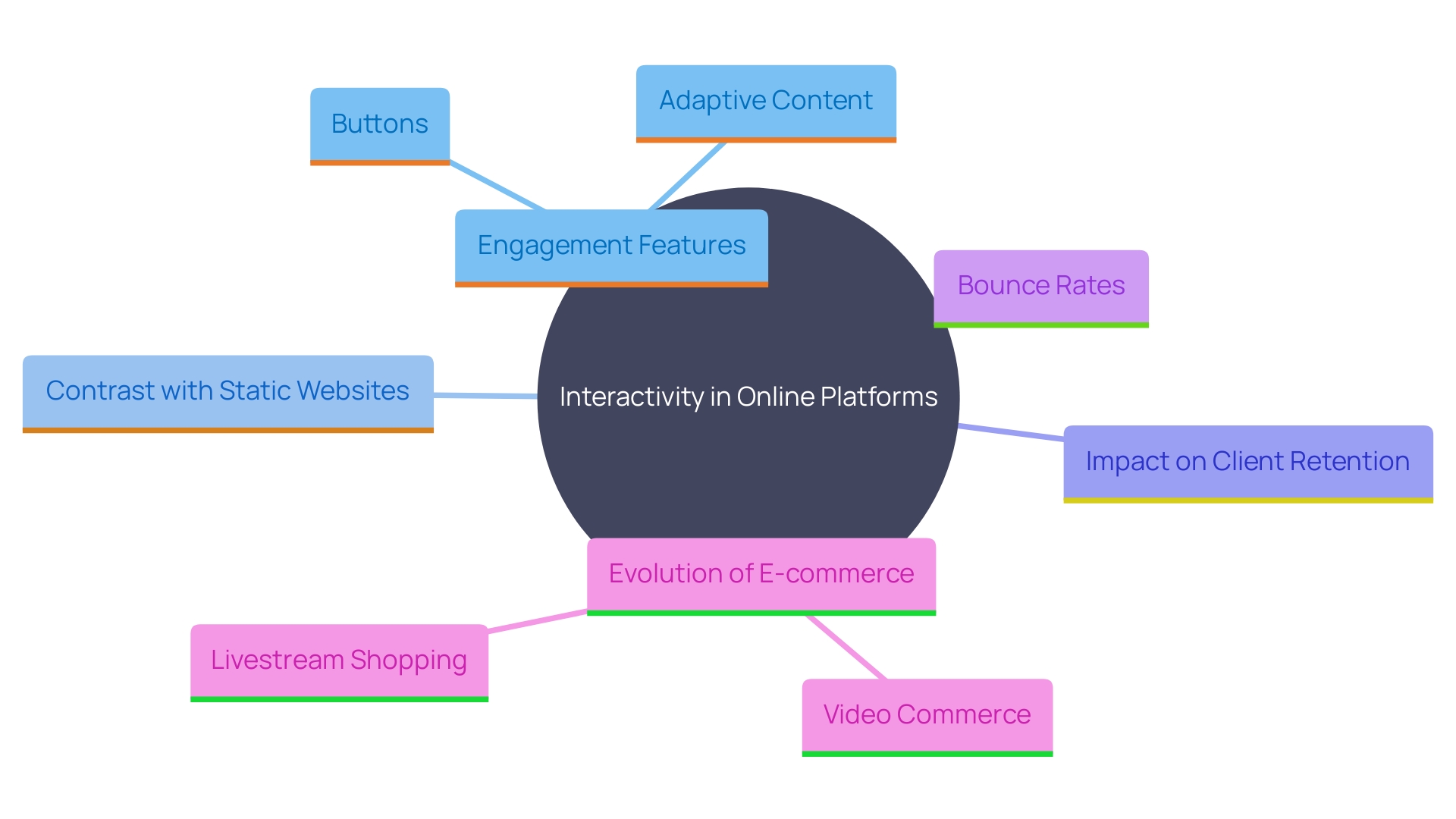
Complexity and Development Requirements
Websites are generally simpler to develop, often utilizing basic HTML, CSS, and some JavaScript to facilitate interactivity. Web platforms, on the other hand, require more advanced programming skills, including backend server management, database integration, and various frameworks such as React, Angular, or Vue. This complexity in development can lead to longer timelines and increased expenses for web solutions compared to traditional websites.
The selection of development framework significantly influences the efficiency and scalability of a web platform. For instance, Ext JS is a popular choice among developers for its robust features. Web platforms also provide competitive benefits by allowing companies to launch innovative services, improve customer interaction, and optimize operations. Their global reach means businesses can serve customers across different regions without physical expansion, thereby improving accessibility and customer service.
Online platforms are essential for companies looking to boost operational efficiency, increase productivity, and sustain a competitive advantage in the digital age. They are scalable, easily maintainable, and provide centralized security, making them essential components of modern business strategies. Furthermore, online programs provide an enhanced experience with rich, engaging interfaces and cross-platform compatibility, enabling them to operate on any device with a web browser. This adaptability ensures a consistent and optimal user experience across various devices, making maintenance easier as updates can be made directly on the server without requiring user downloads or installations.
Scalability and Performance
Scalability is a crucial element when choosing between a site and a web application. Websites can typically manage increased traffic efficiently through the use of content delivery networks (CDNs) and caching techniques, which optimize the distribution of static content like images, JavaScript, and CSS. In fact, static properties can account for up to 80% of a website's content. This approach reduces latency and enhances throughput, ensuring a seamless experience even during traffic surges.
Web solutions, on the other hand, require a more sophisticated approach to scalability. They must be designed to handle concurrent users and intensive data processing demands. This frequently requires the implementation of strong server infrastructure and a carefully planned software architecture. For instance, utilizing microservices can improve scalability by dividing the system into smaller, independent components that can be scaled separately.
Security is another essential aspect that must scale alongside the software. As the software expands, so must its security measures to protect against potential threats. Efficient microservice communication and robust database solutions are key components in this dynamic, ongoing process. By carefully planning and executing the right strategies, your web platform can not only meet current demands but also be prepared for future growth.
The experience of companies like NASA and Dropbox highlights the importance of comprehensive planning and optimization in achieving high scalability. These organizations have successfully managed to accommodate substantial daily visits, sometimes exceeding 100,000, by employing various performance-enhancing techniques.
In essence, scalability is not just about accommodating growth but managing it smartly and sustainably. By adopting the right tools, architectures, and methodologies, your web platform can scale effectively, ensuring both performance and client satisfaction are upheld.
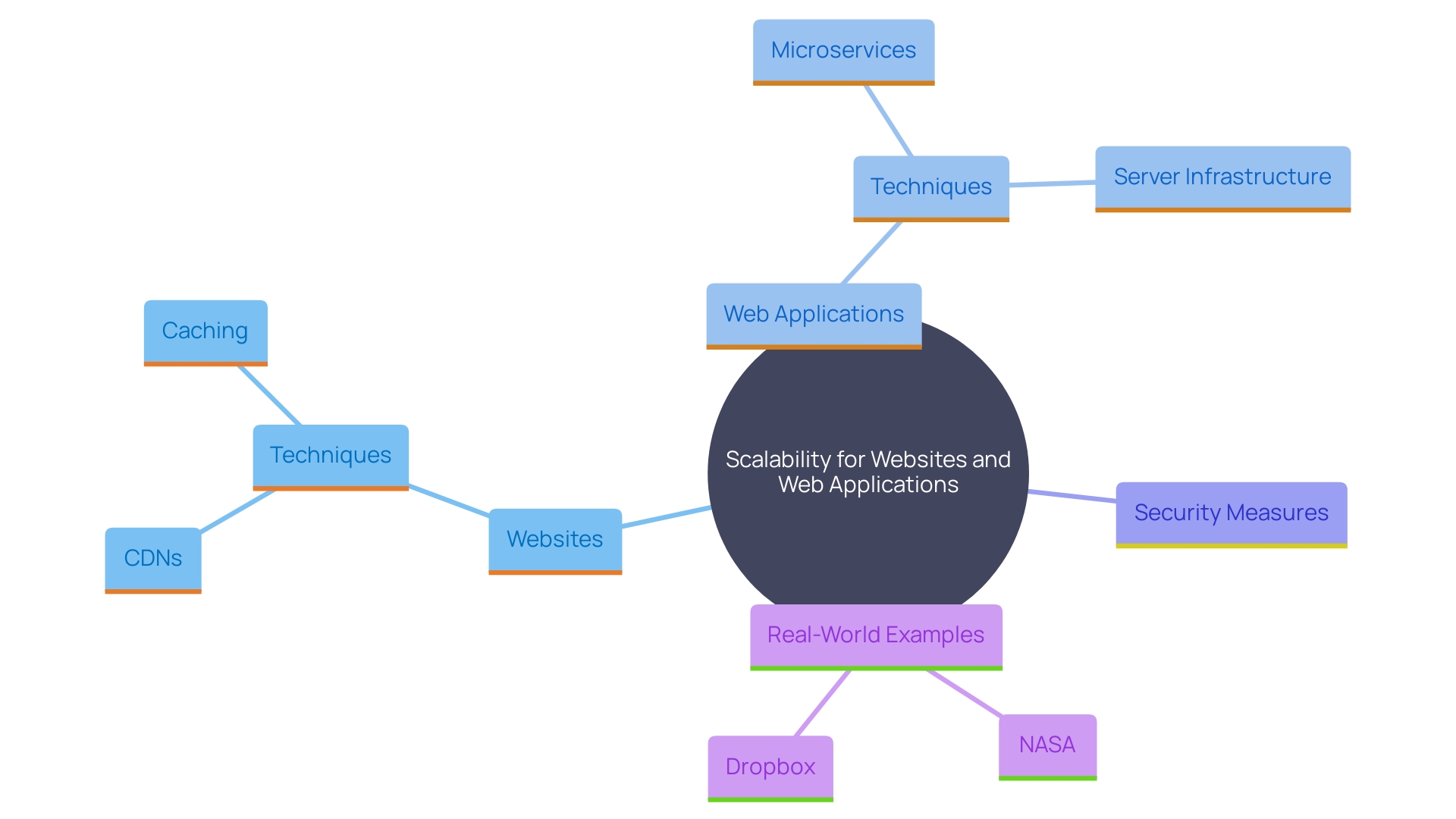
Security and Data Management
Safety is crucial, particularly for online platforms that manage sensitive user information. These programs require rigorous security measures, such as end-to-end encryption (E2EE), secure authentication, and regular updates to protect against vulnerabilities. E2EE ensures that data is encrypted on the sender's device and can only be decrypted by the recipient, safeguarding it from third parties, including internet service providers and hackers. Managing security for web applications also involves effective key management; sharing keys securely among participants is crucial to prevent data loss or exposure.
Recent data breaches, like the 9.4GB leak of Twitter data, underscore the importance of robust security protocols. Such incidents leave individuals vulnerable to phishing attacks, identity theft, and exploitation of data. The new Rhode Island Data Transparency and Privacy Protection Act (RI-DTPPA), effective in 2026, further emphasizes the need for stringent data protection measures by obligating businesses to ensure data security and transparency.
'While online platforms also need security protocols, they typically face fewer risks as they do not manage as much user data.'. As a result, the data handling approaches vary greatly between online platforms and web pages. For web platforms, the focus is on preventing cyber attacks and ensuring data integrity through advanced measures like multi-factor authentication (MFA) and static software security testing (SAST), which can detect critical vulnerabilities before deployment. Conversely, online platforms mainly require protection for their material and visitor interactions, which entails lower complexity in comparison to web software.
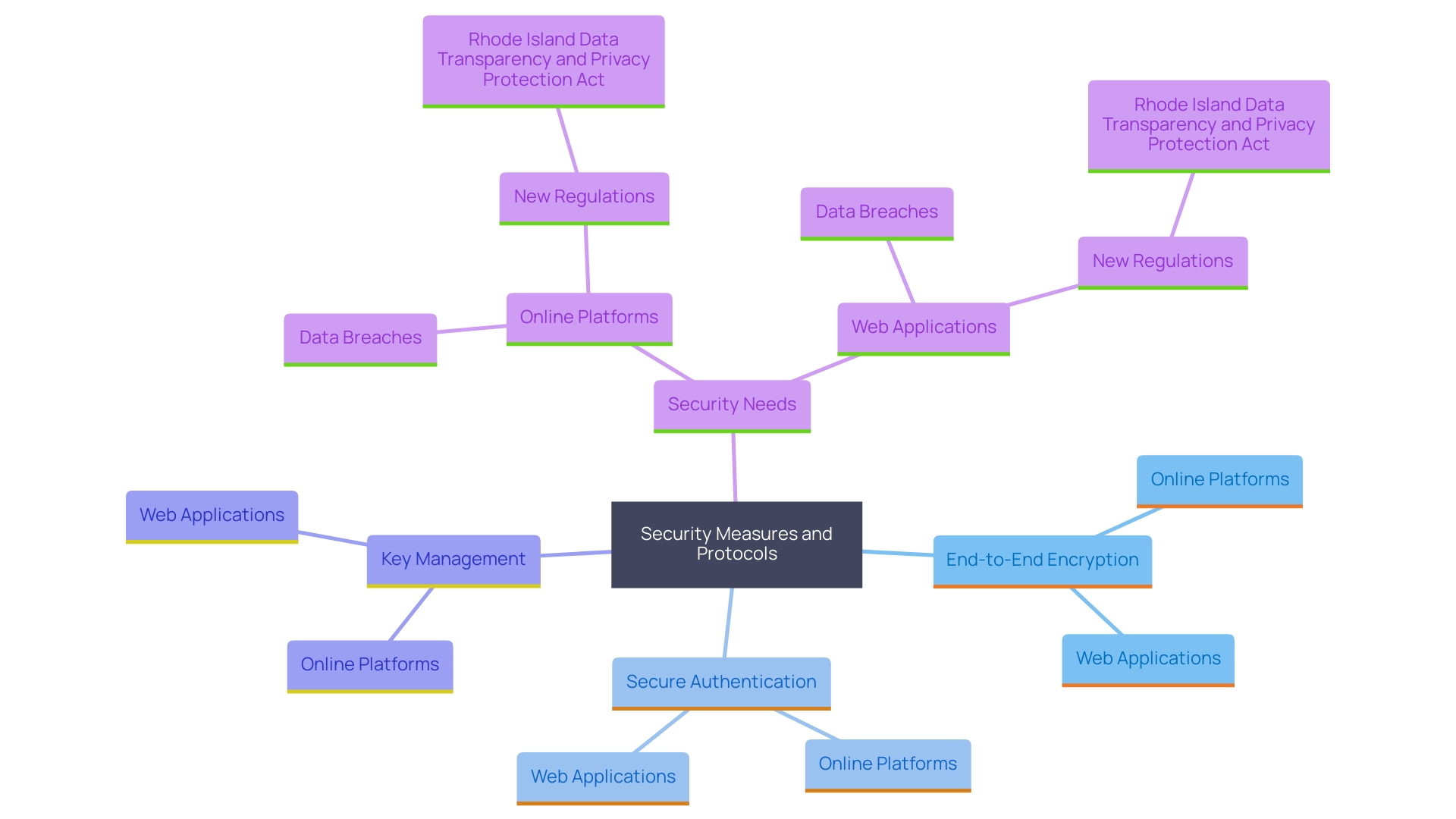
Choosing Between a Website and a Web Application
The choice to create an online platform or a web application depends on particular business goals and user expectations. For instance, if the main goal is to disseminate information and establish a basic online presence, an online platform suffices. This is especially true for small businesses or individuals who need a cost-effective solution that can be accomplished through DIY website builders or hiring web designers at a reasonable cost.
However, when the goal is to enhance interaction with individuals, manage data processing, or incorporate complex functionalities, a web platform becomes the superior choice. This is evident in scenarios where businesses need to provide a seamless experience for individuals across multiple devices, such as mobile phones and tablets, as highlighted by Ripley and Thoughtworks' analysis of customer behavior. 'Their mobile conversion rates were initially very low, prompting the creation of a mobile tool to meet customer preferences for self-service and mobile transactions.'.
Moreover, the actual worth of an online platform or web service can be identified by evaluating its performance and user interaction. For example, a client experienced a tenfold increase in conversion rates and a significant boost in qualified traffic after redesigning their online platform with an optimized technical stack and improved SEO strategies.
In summary, grasping the intended audience and the vital characteristics needed is essential in choosing between an online platform and a web-based tool. As the industry trends towards mobile-first development and the adoption of low-code or no-code design approaches, businesses can better allocate resources to enhance performance, scalability, and client satisfaction.
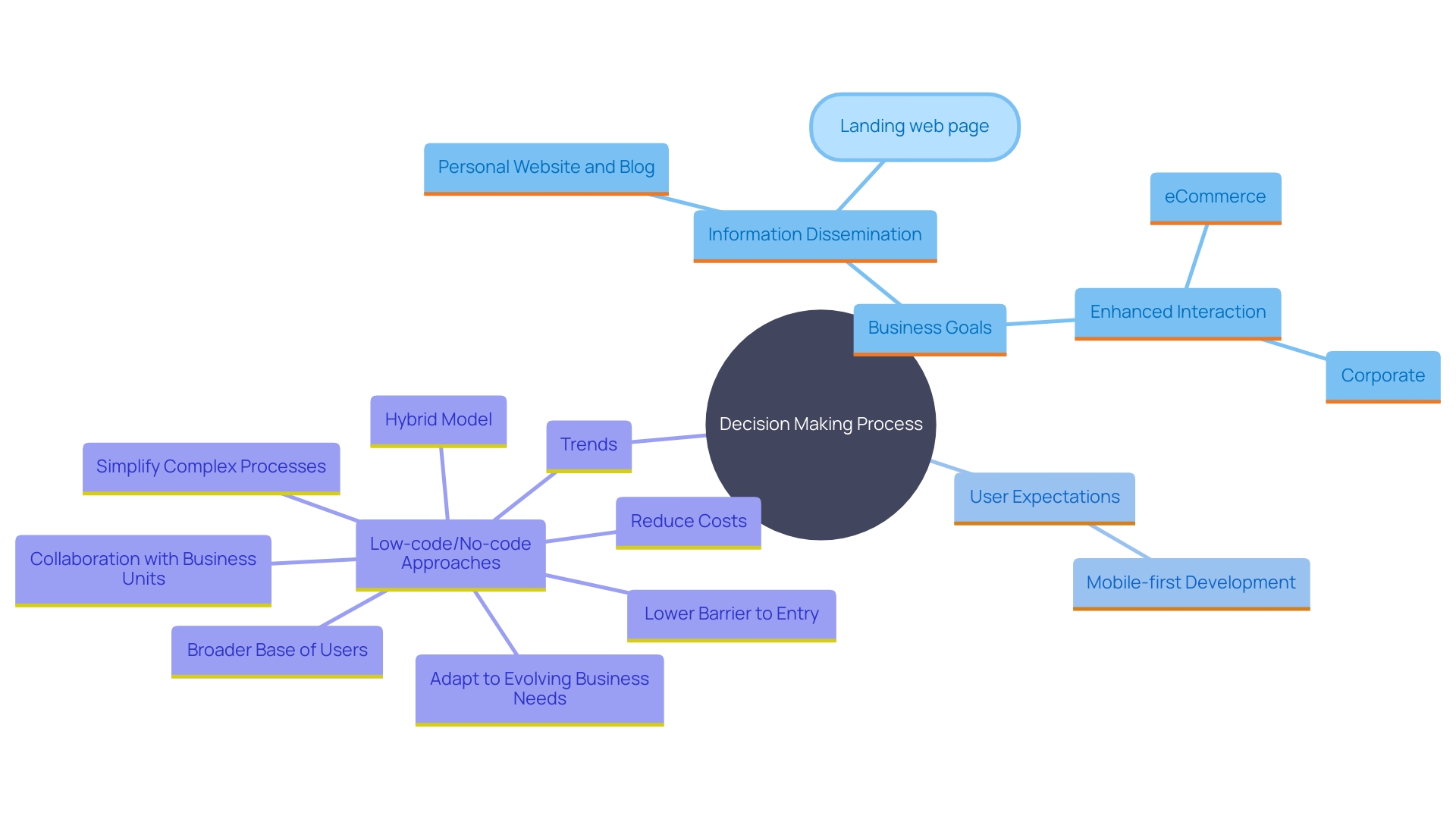
Real-World Examples and Case Studies
Real-world examples clearly highlight the functional distinctions between websites and web software. 'Websites like Wikipedia primarily deliver content, enabling individuals to access and share information smoothly.'. On the other hand, web applications such as Google Docs provide interactive features that enable individuals to create, edit, and collaborate on documents in real-time, reflecting a more dynamic engagement. 'This differentiation aligns with the need for online platforms to be technically optimized and content-rich, as seen in the case study where a site was tailored to meet client needs using an efficient technical stack including Django, Tailwind, and HTMX.'. Furthermore, improving SEO by examining competitor traffic and tailoring content accordingly, as noted in the case studies, guarantees a better experience and engagement. Angus Gibbs from HubSpot also highlights the significance of sustaining performance in real-time systems to fulfill consumer expectations, further stressing the unique operational requirements of web programs compared to web pages. The tailored strategies and advanced techniques used in these examples demonstrate how websites and web applications serve different business models and user interactions effectively.
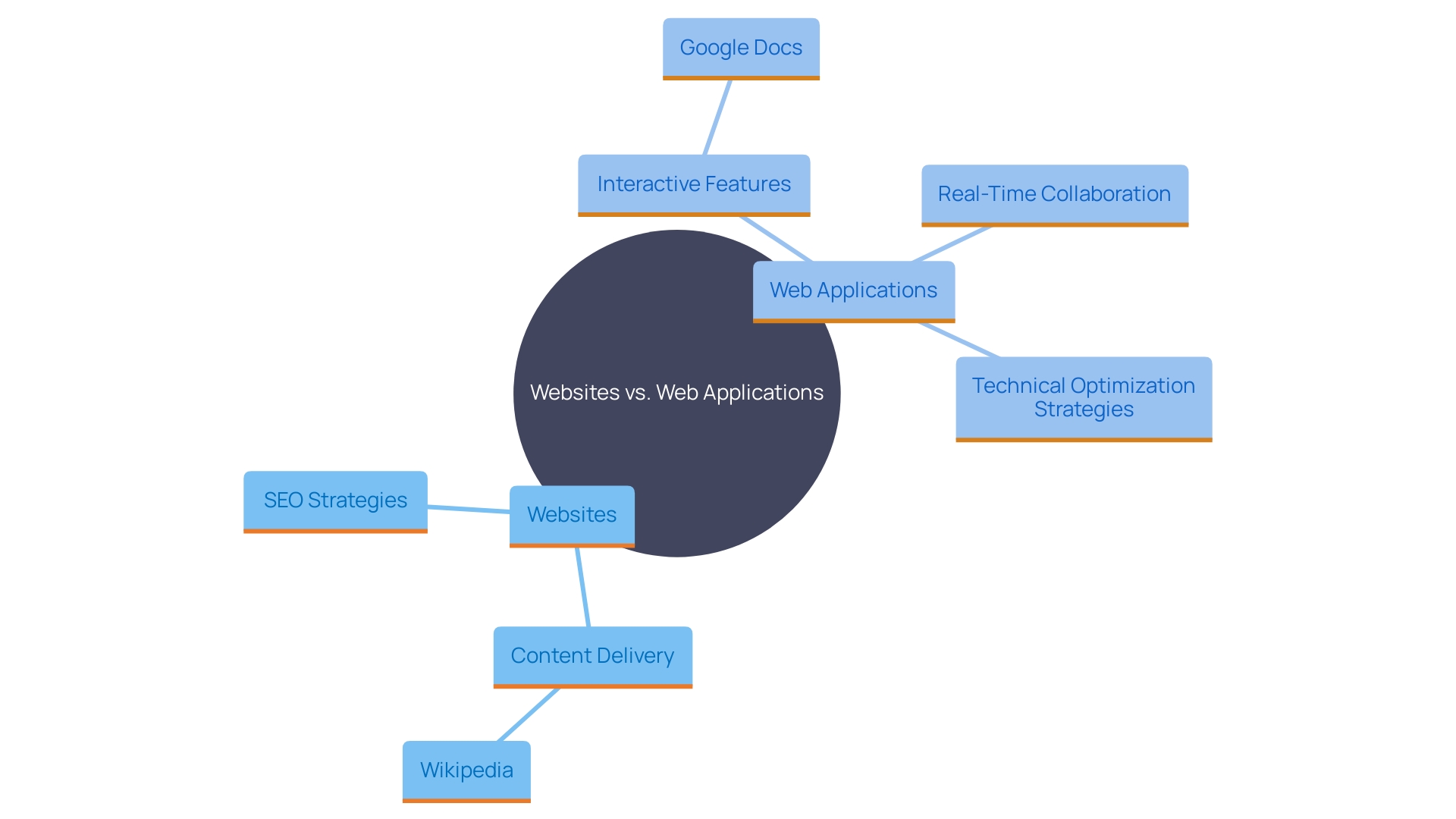
Conclusion
The exploration of the differences between websites and web applications underscores their unique roles in the digital ecosystem. Websites primarily function as informational platforms, delivering static content with minimal user interaction, while web applications offer dynamic, interactive experiences that cater to specific user needs. This fundamental distinction not only influences the development and design processes but also shapes user engagement strategies across various industries.
The complexity of web applications necessitates advanced programming skills and robust security measures, setting them apart from simpler websites. As businesses increasingly demand tailored functionalities and seamless user experiences, the importance of interactivity and user engagement in web applications cannot be overstated. This shift towards more engaging online experiences highlights the need for businesses to carefully assess their objectives and user expectations when deciding between a website and a web application.
Ultimately, the choice between a website and a web application should be guided by a thorough understanding of the target audience, required functionalities, and long-term business goals. As digital landscapes continue to evolve, prioritizing scalability, performance, and security will be essential for ensuring that both websites and web applications effectively meet user demands and drive business success. By leveraging the right technologies and strategies, organizations can optimize their online presence to achieve superior user satisfaction and engagement.





